Music
Trailers
DailyVideos
India
Pakistan
Afghanistan
Bangladesh
Srilanka
Nepal
Thailand
StockMarket
Business
Technology
Startup
Trending Videos
Coupons
Football
Search
Download App in Playstore
Download App
Best Collections
Technology

The world has been turned upside-down the past few weeks, with flight cancellations, global travel bans and a massive slowdown of worldwide commerce.
For immigrants to the United States here on work visas, these are particularly ambiguous and challenging times.
We&ve had prominent Silicon Valley immigration attorney Sophie Alcorn of Alcorn Immigration Law talk about all the nuances of immigration the past few months across our stages and through her Dear Sophie column on Extra Crunch, where she has answered questions like &how do I get visas for employees who work from home& and answering questions around the changes to the H-1B process.
Now, she&ll join us for a conference call we are hosting for Extra Crunch members tomorrow, Tuesday, March 24 at 1 p.m PDT (dial-in details below the jump) to discuss all the news that has happened the last few weeks and its impact on immigrants to the U.S. going forward.
I&ll join Sophie and Silicon Valley reporter Natasha Mascarenhas to talk about all the changes underway in the immigration system, with a focus on the visas typical for founders and workers in Silicon Valley. And then we will take questions from the audience to discuss the trends on what Sophie is seeing across her clients and across the Valley today.
If you aren&t able to join us, we&ll post a transcript of the discussion on Extra Crunch. Herehow to dial in to Tuesdaycall:
- Details
- Category: Technology Today
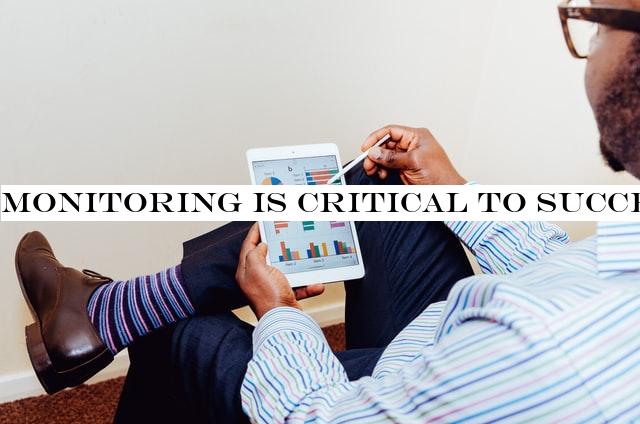
As the world becomes more deeply connected through IoT devices and networks, consumer and business needs and expectations will soon only be sustainable through automation.
Recognizing this, artificial intelligence and machine learning are being rapidly adopted by critical industries such as finance, retail, healthcare, transportation and manufacturing to help them compete in an always-on and on-demand global culture. However, even as AI and ML provide endless benefits — such as increasing productivity while decreasing costs, reducing waste, improving efficiency and fostering innovation in outdated business models — there is tremendous potential for errors that result in unintended, biased results and, worse, abuse by bad actors.
The market for advanced technologies including AI and ML will continue its exponential growth, with market research firm IDC projecting that spending on AI systems will reach $98 billion in 2023, more than two and one-half times the $37.5 billion that was projected to be spent in 2019. Additionally, IDC foresees that retail and banking will drive much of this spending, as the industries invested more than $5 billion in 2019.
These findings underscore the importance for companies that are leveraging or plan to deploy advanced technologies for business operations to understand how and why itmaking certain decisions. Moreover, having a fundamental understanding of how AI and ML operate is even more crucial for conducting proper oversight in order to minimize the risk of undesired results.
Companies often realize AI and ML performance issues after the damage has been done, which in some cases has made headlines. Such instances of AI driving unintentional bias include the Apple Card allowing lower credit limits for women and GoogleAI algorithm for monitoring hate speech on social media being racially biased against African Americans. And there have been far worse examples of AI and ML being used to spread misinformation online through deepfakes, bots and more.
Through real-time monitoring, companies will be given visibility into the &black box& to see exactly how their AI and ML models operate. In other words, explainability will enable data scientists and engineers to know what to look for (a.k.a. transparency) so they can make the right decisions (a.k.a. insight) to improve their models and reduce potential risks (a.k.a. building trust).
But there are complex operational challenges that must first be addressed in order to achieve risk-free and reliable, or trustworthy, outcomes.
5 key operational challenges in AI and ML models
- Details
- Category: Technology Today
Read more: Monitoring is crucial to effective AI
Write comment (91 Comments)Startups continue to find new ways to contribute to ongoing efforts to fight the global spread of COVID-19 during the current global coronavirus pandemic, and personal health hardware-maker Oura is no exception. The smart ring startup is working with the University of California, San Francisco (UCSF) on a new study to see if its device can help detect early physiological signs that might indicate the onset of COVID-19.
This study will include two parts: Around 2,000 frontline healthcare professionals will get Oura rings to wear during the study. The rings track a userbody temperature continuously, as well as their sleep patterns, heart rate and activity levels. Fever is a common and early symptom that could indicate COVID-19, and a continuously updated body temperature reading could detect fever very early. Thatnot enough to confirm a case of COVID-19, of course, but the purpose of the study is to determine whether the range of readings Ouraring tracks might, taken together and with other signals, be useful in some kind of early detection effort.
Theregood reason why researches believe that Oura could be used in early detection: An Oura user in Finland claims the ring alerted him to the fact that he was ill before he was displaying any overt symptoms of the virus, prompting him to get tested (relatively easy in that country). Test results confirmed that while asymptomatic, he had indeed contracted COVID-19. As a result, UCSF researcher Dr. Ashley Mason hypothesizes that the Oura ring could anticipate COVID-19 onset by as many as two to three days before the onset of more obvious symptoms, like coughing.
Being able to detect the presence of the virus in an individual early is key to global containment efforts, but even more important when it comes to frontline healthcare workers. The earlier a frontline responder is diagnosed, the less chance that they expose their colleagues or others they&re working around in close quarters.
In addition to the Oura rings being provided to study participants, the plan is to expand it to include Ourageneral user population, meaning its more than 150,000 global users can opt in to participate and add to the overall pool of available information with their ringreadings and daily symptom surveys. For existing Oura users, ita relatively low-lift way to contribute to the global effort to combat the pandemic — without even leaving the house.

- Details
- Category: Technology Today
Read more: Oura companions with UCSF to establish if its wise ring can aid identify COVID-19 early
Write comment (96 Comments)To help gig workers make ends meet during these times of job insecurity amid COVID-19, New York City is offering gig workers who are licensed with the TLC to help with delivery work.
While the demand for drivers is currently small, NYC says it expects demand to increase for meal delivery to senior citizens and other residents who need to stay home. The jobs pay $15 per hour, as well as reimbursement for gas mileage and tolls. By law, in New York City, Uber, Lyft and Via drivers make a minimum of $27.86 per hour, with an allocation for expenses. After you account for those expenses, it comes out to about $17.22 an hour*
&The World is changing around us and many of you are without work as a result of the COVID-19 pandemic,& the TLC wrote in an email to licensees today. &You are a top priority for the TLC and we recognize that you are among the hardest hit by this public health crisis. As we look at all possible ways to help you and as we assess needs citywide, we ask for your assistance and participation in the Cityresponse.&
Those interested can head over to www.nyc.gov/DeliveryTLC to learn more and sign up. Jobs will be offered on a first-come, first-serve basis.
&New York Cityfor-hire vehicle drivers have seen their earnings plummet amid this pandemic. Drivers are ready to step up to help the city in this time of great need,& Independent Drivers Guild Executive Director Brendan Sexton said in a statement. &We are thankful that the city sees the value in this workforce and appreciate the Commissionerhard work to make DeliveryTLC a reality.&
Last week, both Uber and Lyft suspended their carpooling services in the U.S. in an attempt to limit the spread of the coronavirus. And just three days ago, New York Gov. Andrew Cuomo ordered all non-essential retailers and businesses to close.
Meanwhile, there have been reports that demand has generally been on the decline in light of growing concerns about the virus. Lyft, for example, says it has seen a decline in demand and has consequently expanded its services to include delivery and partnerships with nonprofit organizations, the healthcare industry and the government. Uber, on the other hand, has said demand for ride-hailing services has dropped as much as 70% in the cities most impacted by the coronavirus.
Earlier today, Uber CEO Dara Khosrowshahi sent a letter to the White House, asking that gig workers get protection and financial support in the COVID-19 stimulus packages. In that same letter, Khosrowshahi argued that there needs to be a third employment classification for gig workers that &would update our labor laws to remove the forced choice between flexibility and protection for millions of American workers.&
Over in California, where gig worker protections bill AB 5 became law earlier this year, a group of gig workers are pushing for legislators to fully enforce the new law. That would help to ensure gig workers have access to paid sick leave, disability insurance, family leave and unemployment.
*This story has been updated to reflect hourly wages of rideshare drivers in New York City.

- Details
- Category: Technology Today
Read more: New York City is using gig employees delivery jobs during COVID-19 pandemic
Write comment (99 Comments)The FDA has updated its guidelines for COVID-19 testing procedures to make the process easier and less uncomfortable for patients, as well as to help limit the impact of testing on the supply of personal protective equipment (PPE) used by healthcare workers, including protective masks, face shields, gloves and gowns.
The change means that people taking a test will be able to conduct their own swab, which will involve swabbing shallowly in their nose. The existing process required a healthcare professional to take the swab, and to collect a sample from further up in the nasal cavity. This change does not mean thereany difference in the FDAguidance regarding at-home sample collection & that is still specifically disallowed by the agencyrules, something the FDA clarified over the weekend in order to put an end to at-home test collection kits being distributed by diagnostic startups.
Individuals will still have to go to authorized clinical or drive-through testing sites, and will still have to meet the Centers for Disease Control and Prevention (CDC)screening requirements in order to get tested in the first place. But Vice President Mike Pence said that this will mean that testing conditions are safer for frontline medical personnel in addition to lowering the drain on PPE resources.
Pence also added that all state and private labs now required by law to report all of their results by law to the CDC, whereas previously, some states were reporting only positive results, which obviously skewed the data in terms of the number of people in the U.S. tested and the resulting positive diagnoses.

- Details
- Category: Technology Today
Read more: FDA updates COVID-19 screening guidelines to permit self-swab examinations
Write comment (93 Comments)The vicissitudes of social distancing have taken many people by surprise, making video calls a new necessity for distant socializing. But which of the two-dozen apps out there should you and your (perhaps not as tech-savvy) friends and family use? Here are our recommendations, whether itfor a coffee meeting, a family get-together or a late-night gaming hangout.
This list is for individuals looking for a free solution to easily connect with others, not for small businesses or enterprises. The focus here is on ease of use and features that make it attractive to ordinary people. Every app is free and cross-platform, meaning iOS and Android at least, with many supporting Macs and Windows machines as well.
For big groups
Skype (iOS, Android, Mac, Windows, Linux, web)
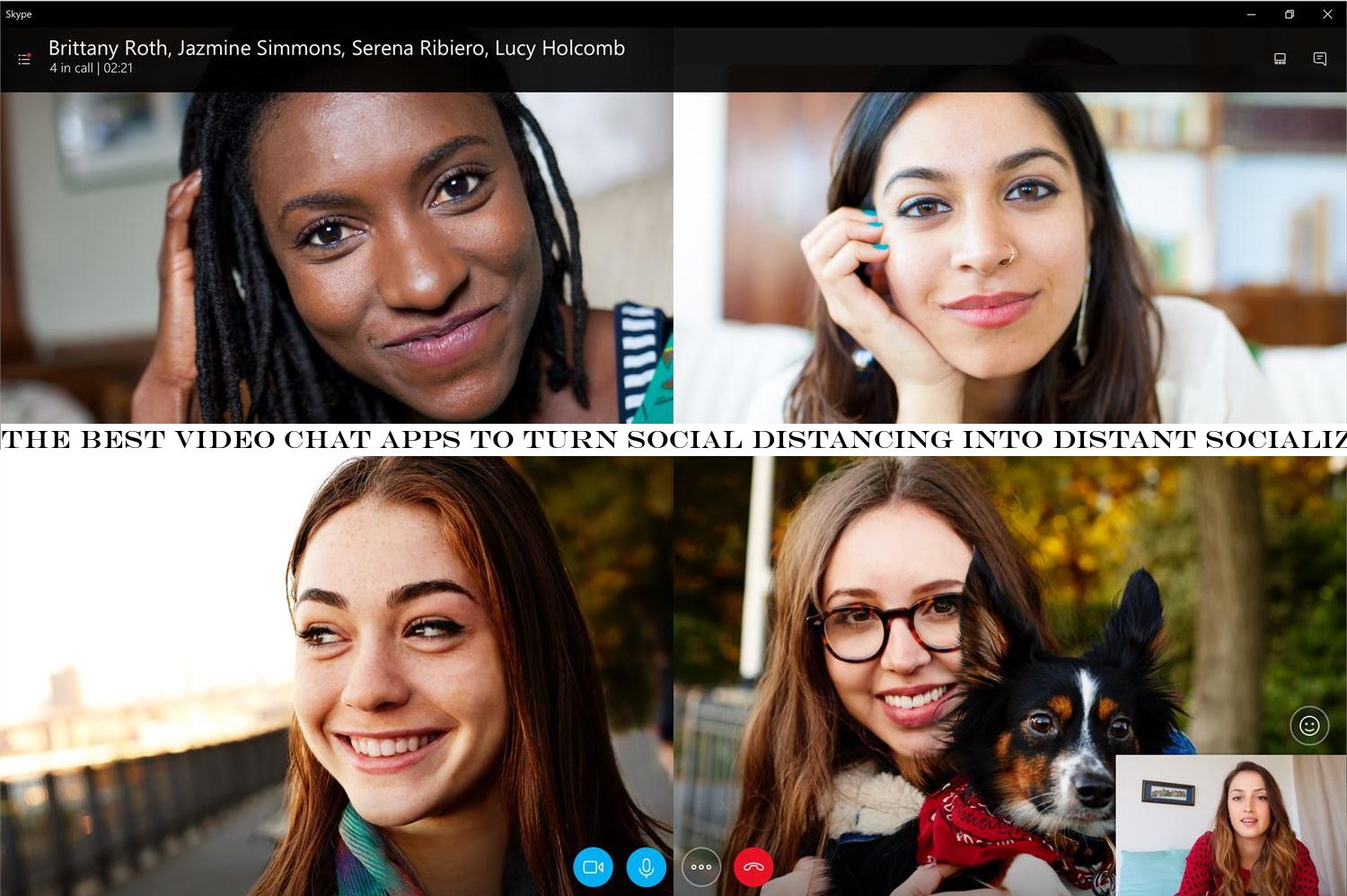
Pros: Many simultaneous callers
Cons: Tries too hard to do other things
Skype has been around for a long time, and while its desktop app is pretty weak, the mobile version is solid and it supports big groups with no real time limit (four hours per call, 100 hours per month), for free. As long as you focus on just the video calls, itgreat, but Skypeemoji reactions, status updates and other cruft are best avoided.
Zoom (iOS, Android, Mac, Windows)

Pros: Many simultaneous callers, strong admin controls
Cons: Sketchy background data policies, 40-minute limit
Zoom is one of the most popular business video conference apps out there due to its reliability, solid web integration and other features. Itnot really made for personal calls — there are way more bells and whistles than you need — but its free plan works just fine for them. Unfortunately, therea 40-minute limit for group calls, which you&ll hit faster than you think, and everyone will have to hang up and start again. Zoom has also been criticized for its considerable behind-the-scenes data collection. If you really want to just chill with your friends, there are better options.
For friends and family
FB Messenger (iOS, Android, Mac, Windows)
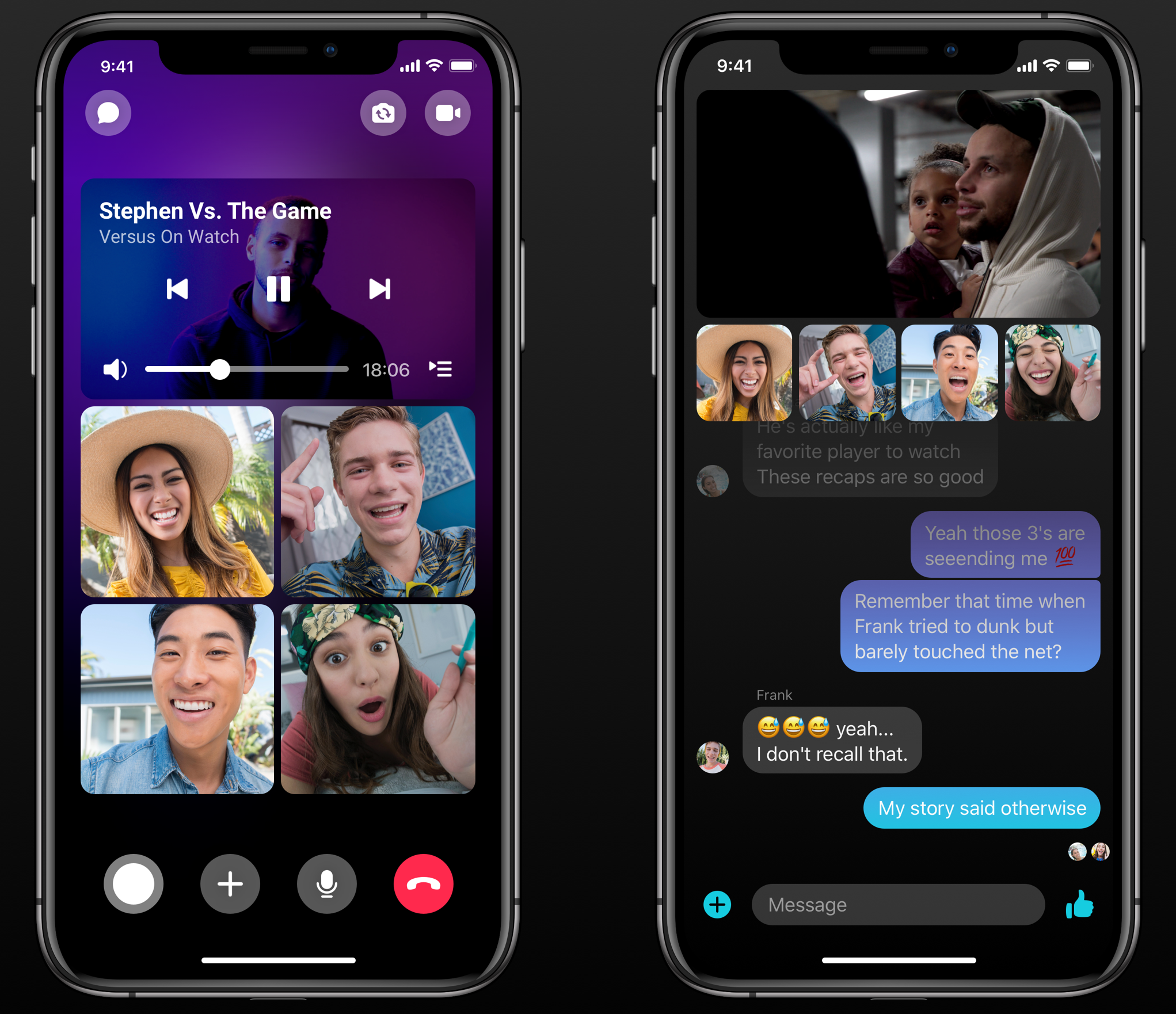
Pros: Easy to use, many people already on it, some handy group features
Cons:Facebook account required
Messenger is a popular app for good reason — it works well for pretty much every kind of digital communication you might want to do with your friends. It supports up to eight people in free video calls with no duration limit, and when you are doing a two-person call it switches to a peer-to-peer structure, skipping servers and potentially avoiding congestion. Of course, italso a Facebook product, meaning you&ll need an account there — not something everyone is into. But Messenger use is considerably better protected from Facebook snooping than posts and images on the main site.
WhatsApp Messenger (iOS, Android, Mac, Windows, web)

Pros: Secure, popular
Cons: Only four people per video call
Think of WhatsApp as FB Messengernerdier, less-good-looking sibling. With a focus on privacy, WhatsApp is popular around the world despite being super ugly, and while video calls aren&t its main feature, they are possible if you don&t mind a four-person limit. To activate it, start a group chat and then hit the call button at the top right and select the participants, then hit the camera.
Google Duo or Hangouts (iOS, Android, web)

Pros: Simple interface, uses existing Google account
Cons: Confusing platform issues, Duo may not be long for this world
Duo is one of Googlelater messaging products, started as a complement to Allo and meant to be sort of the consumer version of Hangouts, which is being split into Chat and Meet, but still exists on its own. Confused? So is Google. But the apps work pretty well for now, plugging into your existing Google contacts and accounts and letting you do straightforward, unlimited video calls. If your friends don&t want to sign up for a new account anywhere, this is a good option — just don&t get attached, as unpopular Google products don&t tend to live for long.
Marco Polo (iOS, Android)
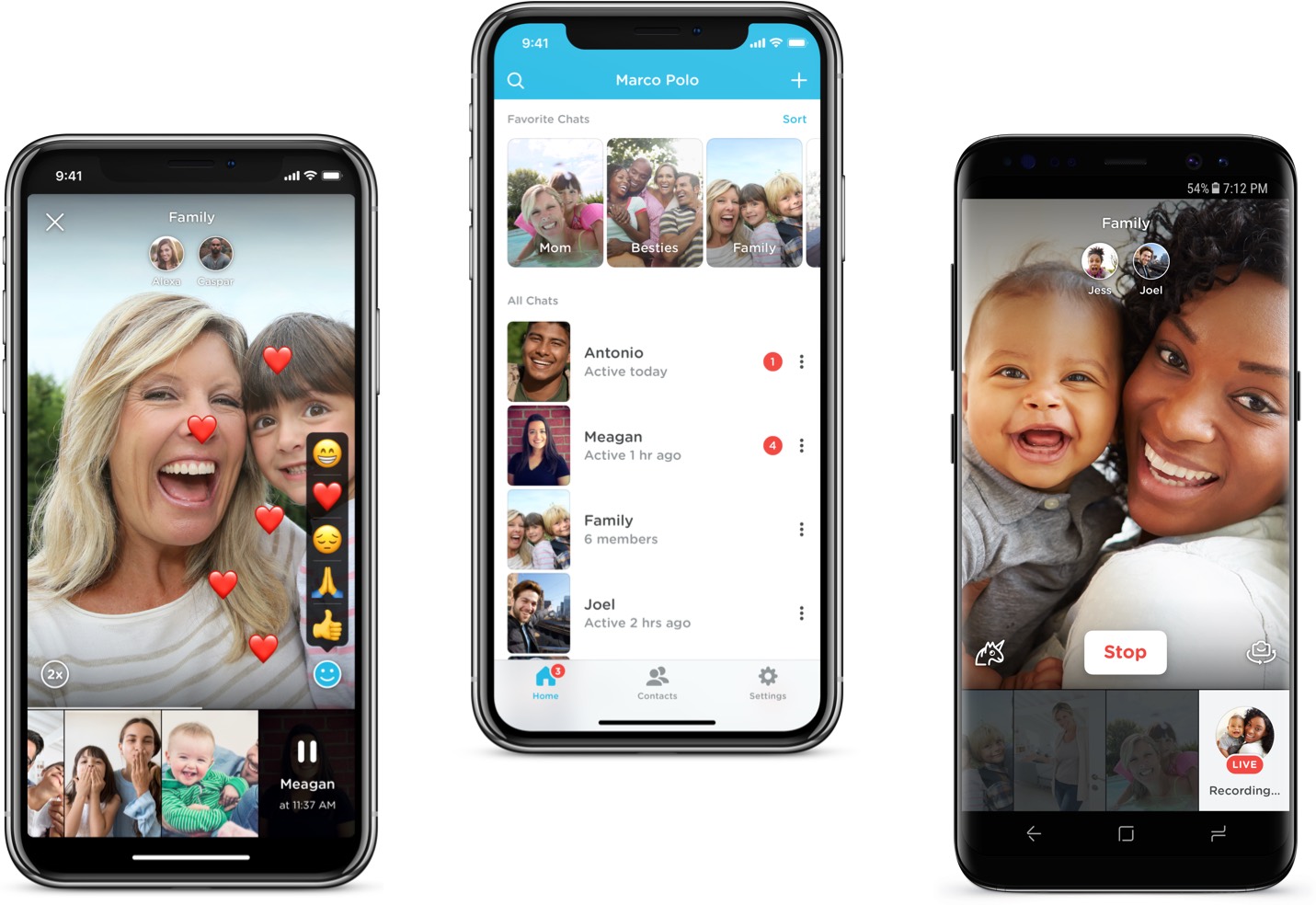
Pros: Video messaging is a fun alternative to live chats
Cons: No live chat option
This isn&t a video chat app per se, but the fact is not everyone really wants to do a full-on live face-to-face video all the time. Marco Polo is like a streamlined Snapchat, sending short videos to friends or groups with the option to add doodles, filters and so on. If you and your friends are finding it hard to set aside half an hour to talk live, this can be a good alternative.
Honorable mentions: FaceTime, Instagram
FaceTime is great, but itnot cross-platform, considerably limiting its usefulness. But if your friends do happen to have Apple products, ita great, simple option. Instagram has video calling built into direct messages, which is nice for quick calls with people you aren&t sure you want to bring into a smaller circle of connectivity.
For having fun together
Houseparty (iOS, Android, web)
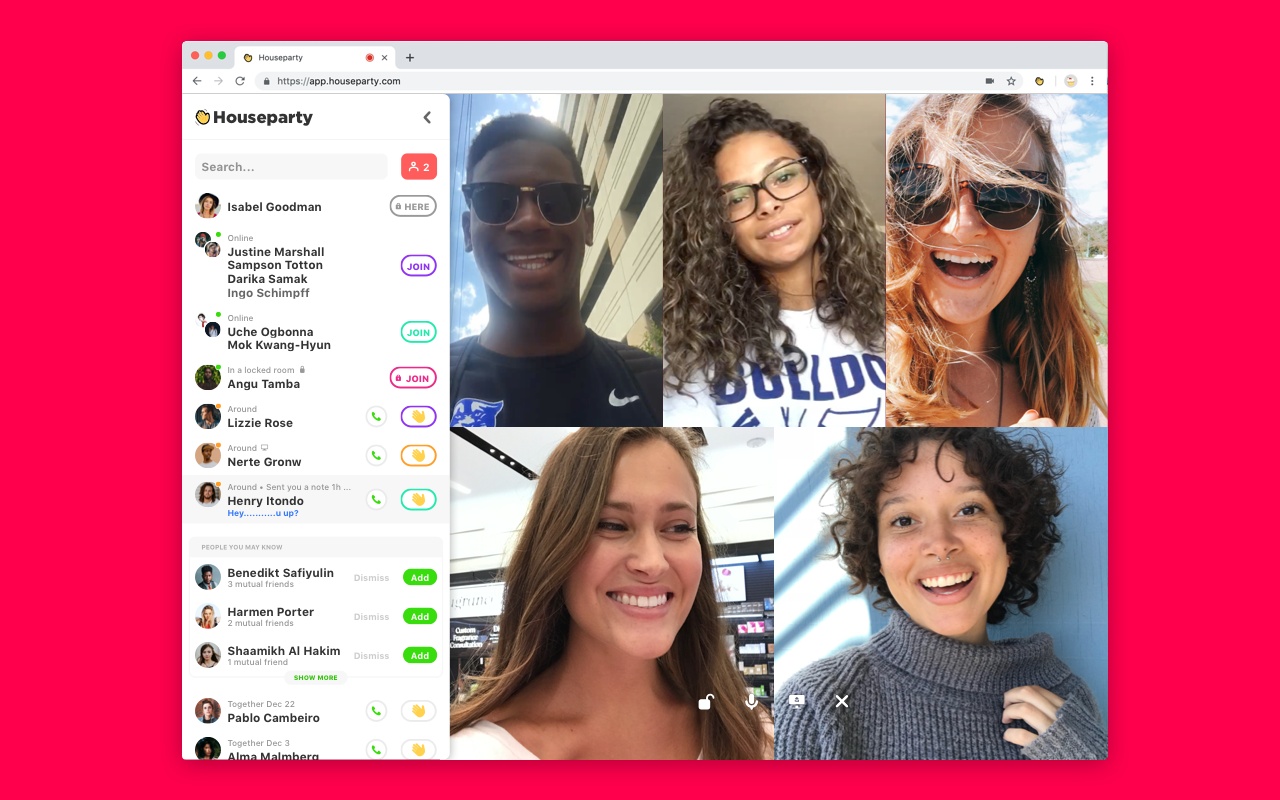
Pros: Simple drop-in, drop-out group chat, built-in games
Cons: Basically a trojan horse for Heads Up
Houseparty established its brand as the app teens were using to chat with groups of friends without leaving the house. Pundits disapproved, but as usual, the kids get the last laugh. Houseparty is nice for a group of close friends, alerting you when someoneavailable and letting people easily join in the chat with minimal fuss. The built in games are also fun, but you&ll have to pony up for Heads Up decks. The Pictionary clone is fun, but desperately needs more words.
Discord (iOS, Android, Mac, Windows, Linux, web)
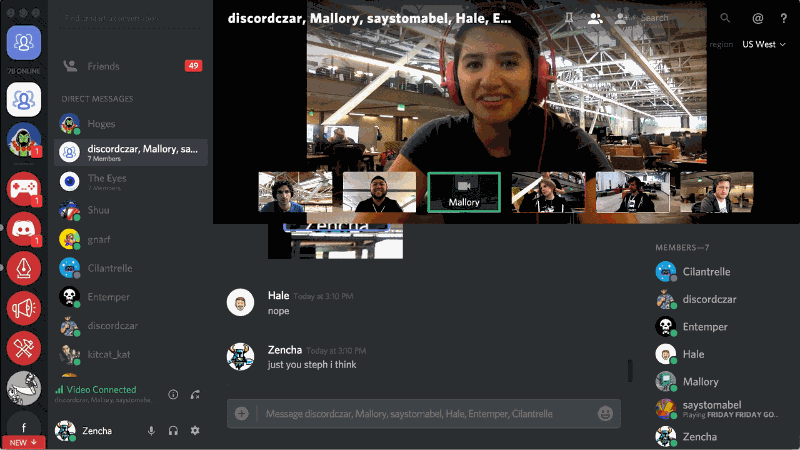
Pros: Great for voice chat while gaming or simple occasional video chat
Cons: Occasionally confusing interface, not video-focused
Discord is the de facto champion for gaming-related communications, taking the place of many in-game chat interfaces and even schooling industry heavyweights like Steam. While itmainly focused on audio and does that well, video is an option too. Less savvy users may also find its interface confusing, with multiple tabs, groups and channels.
Honorable mention: Bunch, Squad
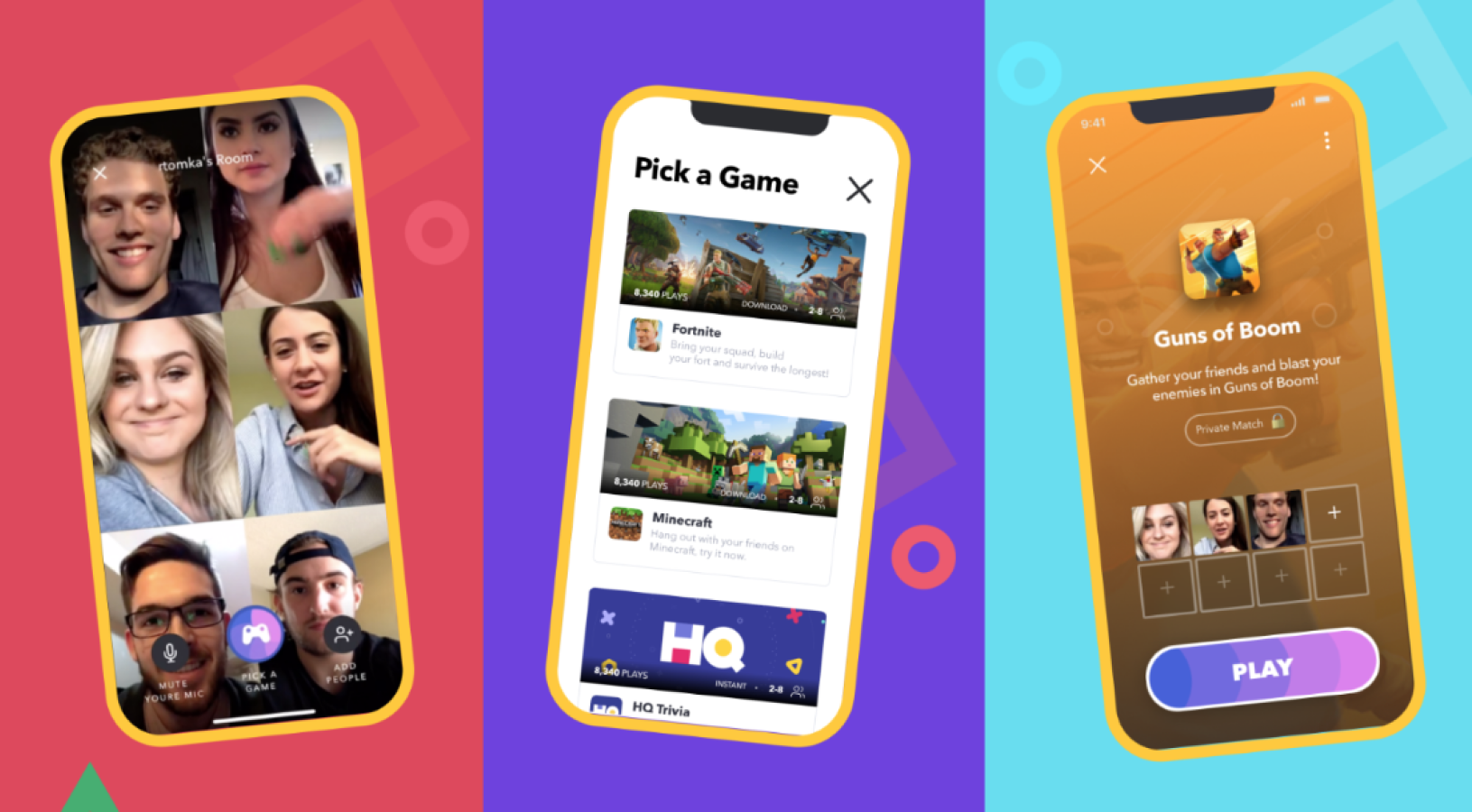
A newer app, Bunch, is focused on group games while in video chat. This can be hit or miss and you can expect in-app purchases, and startups like this don&t always live forever. But Bunch is probably getting a lot of engagement right now and can use that to extend its credit long enough to power through the summer at least. I can&t think of a better opportunity to give it a shot.
Squad is focused on sharing what you&re doing on your phone while chatting — so you can Tinder together, watch videos, etc. Like Bunch, itstill new, so you&ll have to get your friends to sign up, but ita nice way to share what you&re scrolling (or swiping) through.

- Details
- Category: Technology Today
Page 1138 of 1418

 18
18





